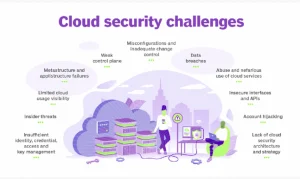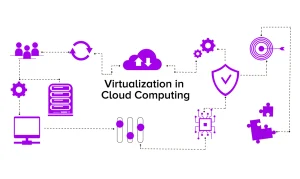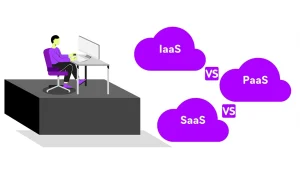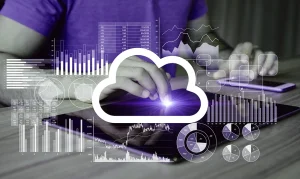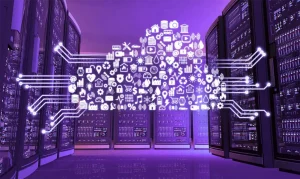I. Introduction
Data is the lifeblood of today’s digitally networked society. We are becoming more dependent on data in all facets of society, from high-tech houses and cars to factories and hospitals. High latency, network congestion, and security issues are some of the problems with the conventional cloud computing paradigm, in which data is handled in centralized data centers. The role of edge computing in this context becomes clear. The ability to analyze data in real time at the network’s periphery is the “edge computing” that ushers in a new era in data management and use.
A. Definition of edge computing and its importance in the modern technological landscape
To cut down on delays and improve the quality of decisions made in real time, businesses are increasingly adopting a decentralized computing paradigm known as “edge computing.” Data processing and storage may be performed locally at the device or sensor level thanks to the placement of computing resources at the network’s edge. The increasing needs of data-driven applications necessitate the use of edge
When data is processed in real time at the network’s edge, it completely changes how data is handled and used. Reduces lag time, makes the most of available bandwidth, protects user data, keeps things running smoothly even in the wild, and allows for expansion. Edge computing allows businesses to overcome the limits of conventional cloud computing models and discover new avenues for developing mission-critical applications.
II. Understanding Edge Computing

Edge computing’s promise can only be fully realized if its key differences from the conventional cloud computing approach are grasped. With cloud computing, data is processed in off-site data centers, which may be situated some distance from either the end user or the original data source. This centralized method primarily depends on network connection and increases delay as a result of data transit time. However, edge computing moves data processing closer to the edge of a network, hence lowering latency and allowing for real-time insights.
A. Explanation of the traditional cloud computing model and its limitations
The conventional paradigm of cloud computing relies heavily on off-site data centers for both processing and storing data. This paradigm requires constant communication between edge devices and the cloud where data may be analyzed and stored. Despite its critical role in improving technology, cloud computing has significant drawbacks.
a) Delays in data processing and decision-making due to latency introduced by data transmission from edge devices to the cloud and back. Time-sensitive applications that need instantaneous insights and responses are especially vulnerable to this lag.
b) Bandwidth limitations are limited in its ability to move vast amounts of data because of bandwidth limitations in the underlying network. In situations when a great deal of data is produced, this might cause network congestion, higher expenses, and restricted scalability.
c) Cloud computing requires a constant and dependable internet connection. However, depending on cloud-based processing may significantly reduce operating efficiency in settings with limited or inconsistent access, such as distant regions or places with weak network infrastructure.
Concerns about security and privacy are raised when sending sensitive information to the cloud. Companies may be concerned about the security of their data during transmission and storage, as well as their ability to demonstrate compliance with data protection laws.

B. Introduction to edge computing as a distributed computing paradigm
Edge computing is a kind of distributed computing that primarily makes use of peripheral network nodes to do computations. A network’s edge consists of nodes and other components located near the data generator or the end user. Proximity, decreased latency, optimized bandwidth, and the ability to function even when the network is down are all hallmarks of edge computing. Edge computing reduces reliance on a constant online network and enables instantaneous decision-making by processing data at its source.
C. Key characteristics of edge computing: proximity, latency reduction, bandwidth optimization, and offline operation
Proximity, lower latency, optimized bandwidth, and the ability to function even when the network is down are all hallmarks of edge computing.
When compared to the constraints of the typical cloud, edge computing represents a significant change. It takes use of the dispersed computing capabilities at the network’s edge, which are often positioned in close proximity to the data source or end-user. Edge computing’s potency stems from many of its distinguishing features.
a) Proximity: Edge computing greatly minimizes the physical distance data must travel by processing it at the edge, closer to the source. Applications that need instantaneous action greatly benefit from this close proximity since it reduces latency and allows near real-time data processing and reaction.
Edge computing, since it processes data locally, substantially reduces latency. Data may be processed and acted upon in real-time at the edge, reducing the need for journeys to the cloud and allowing for more rapid decision-making and higher operational efficiency.
By filtering and aggregating data at the edge before sending it to the cloud, edge computing makes efficient use of available bandwidth. To alleviate network congestion and minimize data transfer costs, only relevant and summarized information is delivered rather than enormous amounts of raw data.
One of the main benefits of edge computing is that it can function even when there is no network connection or when there is a slow connection. Even in a disconnected environment, data may be processed and activities executed on edge devices and servers. Because of its ability to function even when the network is down, edge computing is well-suited for deployment in difficult or far-flung areas.
When combined together, these features let businesses go beyond what’s possible with the common cloud computing setup. Edge computing is an attractive option for many use cases because it facilitates instantaneous decision-making, reduces latency, maximizes bandwidth use, and ensures continuous service.
Related:- Everything You Need To Know About Edge Computing
III. Benefits of Edge Computing
The many advantages of edge computing are dramatically altering the way information is managed and used. Some of its most salient benefits are as follows:

A. Real-time data processing: Minimizing latency for critical applications
Edge computing’s capacity to provide near-real-time data processing is perhaps its greatest benefit. Edge computing offers near-instantaneous insights and actions by reducing latency via local data processing. When dealing with time-sensitive applications like driverless cars, industrial automation, and emergency response systems, this is of the utmost importance. An organization’s operational efficiency and results may both benefit from real-time data processing at the edge since it allows for quicker, more well-informed decision-making.
B. Bandwidth optimization: Reducing network congestion and data transfer costs
The large volumes of data being transported to and from the cloud may place a strain on the bandwidth of traditional cloud computing architectures. In order to overcome this difficulty, edge computing filters, aggregates, and processes data locally. To save on storage space and transmission time, just the necessary details or summaries of findings are uploaded to the cloud. Network congestion is reduced, data transmission costs are lowered, and overall network performance is improved thanks to edge computing.
C. Enhanced security and privacy: Keeping sensitive data localized and reducing exposure to threats
Edge computing offers an appealing answer to the rising worries about data leaks and privacy. As opposed to sending sensitive information onto the cloud for processing and storage, businesses may retain it inside their own infrastructure and so reduce the likelihood of it being compromised. By keeping data processing on a regional level, both privacy and security may be improved. With edge computing, businesses can safeguard their data without sacrificing access to the valuable insights it provides.
D. Offline operation: Ensuring uninterrupted service in remote or disconnected environments
Edge computing permits continued functioning even when network access is intermittent. Even in disconnected or far-flung settings, edge devices and servers may analyze data and carry out activities. In the oil and gas, mining, and agricultural sectors, where data processing is essential but connection is spotty at best, this is a huge boon. Edge computing safeguards vital capabilities and reduces the likelihood of service interruptions since it can operate even when the network is down.
E. Scalability and flexibility: Handling large-scale data processing and accommodating diverse devices
Data processing on a massive scale is no problem for edge computing. Edge computing offers the infrastructure required to support a wide variety of devices, from low-powered sensors and IoT gadgets to high-powered edge servers, as the number of connected gadgets continues to increase at an exponential rate. Edge computing gives businesses the agility to respond to changing market conditions by expanding or contracting their data processing resources. It allows for streamlined integration into preexisting processes by supporting the effective handling and processing of data from a wide range of sources.
IV. Components of Edge Computing Architecture
A well-designed architecture is essential for making the most of edge computing. Edge computing’s primary building blocks are:

A. Edge devices: Sensors, IoT devices, and mobile devices
Sensors, Internet of Things devices, and mobile devices all play critical roles in data collection at the network’s edge. They capture information in real-time from a wide range of sources and serve as a bridge between the digital and physical worlds.
B. Edge gateways: Local data aggregation and preprocessing
When connecting edge devices to edge servers, edge gateways are the go-betweens. They enable local data aggregation, preprocessing, and filtering before sending the data to edge servers or the cloud for further processing. With the help of edge gateways, data may be sent and processed quickly before being delivered to the cloud.
C. Edge servers: Hosting applications and providing computing resources
In order to handle data at the edge, programs must be hosted on edge servers, which also provide the necessary computational resources. They enable real-time analytics and decision making by bringing processing capacity closer to the data source. In order to process data efficiently and deal with the high volume of work being done at the edge, edge servers are built with powerful computing architectures.
D. Cloud integration: Seamless interaction between the edge and the cloud
Even while edge computing prioritizes on-premises data processing, it must be fully integrated with cloud services. Additional storage, sophisticated analytics, and long-term data preservation are all provided by cloud services, which are a welcome addition to edge computing. Organizations may take use of edge computing and cloud computing together via integration, resulting in a hybrid strategy that improves data processing and analysis.
V. Use Cases and Applications
Edge computing has been used in a wide variety of contexts, allowing for novel possibilities and facilitating radical shifts in business practices. Let’s have a look at some common applications:

A. Industrial Internet of Things (IIoT): Real-time monitoring and predictive maintenance
Edge computing allows for continuous monitoring of industrial machinery and operations. It makes it easier to do preventative maintenance by analyzing data from edge sensors locally to spot problems before they occur. Organizations may save money on downtime, improve maintenance efficiency, and boost output if problems are caught early.
B. Smart cities: Efficient management of traffic, energy, and waste systems
Edge computing is crucial to the growth of smart cities. It paves the way for better control of transportation, power, garbage, and security. Smart cities are able to optimize resource allocation, react to real-time events, and improve sustainability, congestion, and citizen services by processing data locally at the edge.
C. Healthcare: Remote patient monitoring and real-time analysis of medical data
Edge computing is revolutionizing healthcare by allowing for real-time analysis of medical data and remote monitoring of patients. Patient data is gathered at the periphery by wearable devices and sensors and then analyzed locally for real-time insights. Thanks to this, timely treatments, early disease identification, and individualized treatment plans all contribute to better health outcomes for patients.
D. Autonomous vehicles: Low-latency decision-making for enhanced safety
For autonomous cars to progress, edge computing is essential. Because of edge computing’s ability to analyse data and make decisions quickly, cars can adapt to new traffic patterns, dangers, and road conditions in real time. Computing at the network’s periphery improves the dependability and safety of autonomous vehicles by reducing the amount of time it takes for data to be sent.
E. Retail and logistics: Inventory management, supply chain optimization, and personalized customer experiences
The retail and logistics industries gain greatly from edge computing. It helps merchants to manage their stock in real time, hence improving stock optimization, decreasing out-of-stocks, and streamlining supply chains. With edge computing, data can be analyzed locally, so businesses can send advertisements and suggestions directly to their target audience.
Read More:- Exploring The Metaverse: The Future of Digital Interaction
VI. Challenges and Considerations
Although there are many benefits to be gained from edge computing, there are also certain obstacles and things to think about for businesses.
A. Network connectivity and reliability in edge environments
The ability to send and receive data is essential to edge computing, which is why it must be connected to a network. It might be difficult to guarantee constant connection, particularly in more isolated or difficult settings. To ensure uninterrupted operations, businesses must have reliable networking infrastructure and plan for failsafe connections.
B. Data management and synchronization across edge devices and the cloud
Keeping data in sync across edge devices, edge servers, and the cloud may be a challenging task. Effective data management methods and synchronization protocols are required to guarantee data consistency, integrity, and synchronization in a distributed context.
C. Security and privacy concerns in decentralized edge ecosystems
With the advent of edge computing, a network of computers and other devices in the network’s periphery work together to process and store data. Strong authentication, encryption, and access control measures are necessary to keep sensitive information safe in a decentralized setting where it may be vulnerable to attacks.
D. Standardization and interoperability among edge devices and platforms
There is a barrier to interoperability and standardization due to the diversity of edge devices and platforms. To facilitate easy integration and cooperation across various edge devices and platforms, businesses need to solve compatibility challenges and build common frameworks, protocols, and standards.
VII. Future Trends and Innovations
Several developments and trends are influencing the future of edge computing:
A. Edge AI: Integration of artificial intelligence and machine learning at the edge
Using AI and ML together at the periphery is becoming more popular. Edge AI allows for real-time data analysis and decision-making without primarily depending on cloud resources by putting AI capabilities closer to the data source. This allows for the development of more complex and smart edge applications, which in turn improves automation and predictability.
B. Edge-as-a-Service (EaaS) models: Provisioning of edge resources and services
It is expected that Edge-as-a-Service models will develop in the edge computing space, allowing businesses to take advantage of cloud-like delivery of edge resources and services. As a result, businesses may save money and increase scalability by allocating edge computing resources dynamically depending on demand.
C. Federated learning: Collaborative model training across edge devices while preserving privacy
Federated learning allows for the secure, distributed, collaborative training of models at the edge of a network. In a federated learning system, edge devices train models locally without transferring data to the cloud, protecting the privacy of the collected data. The potential of edge devices to aid in the creation of AI models is unlocked via federated learning.
D. Edge-native applications: Development of applications specifically designed for edge environments
We may anticipate the creation of apps tailored to edge settings as edge computing becomes more widespread. These applications will take full advantage of the enhanced performance, dependability, and efficiency that edge computing provides.
VIII. Conclusion
A. Recap of the potential of edge computing for real-time data processing
The advent of edge computing, which permits near-real-time data processing at the edge, has dramatically altered our approach to and use of information. Edge computing improves the viability of mission-critical applications in a variety of sectors by lowering the barrier to entry for users, maximizing the efficiency of available resources, bolstering security and privacy, allowing for work to be done even when no network is available, and allowing for scalability and flexibility.
B. Encouragement to embrace edge computing for unlocking new possibilities and addressing challenges
Edge computing has a bright future if we can overcome obstacles, including poor network connection, poor data management, insufficient security, and a lack of standardization. Edge computing is set to become a crucial component of our interconnected world because of advances in artificial intelligence, the rise of Edge-as-a-Service models, the rise of federated learning, and the rise of edge-native apps.
C. Vision for a future where edge computing becomes an integral part of our connected world
By using edge computing, businesses may increase operational efficiency, speed up decision-making, provide better user experiences, and more. Edge computing may help us deal with the rising demands of the digital era and usher in a world where data processing and analysis are performed transparently at the network’s periphery.




